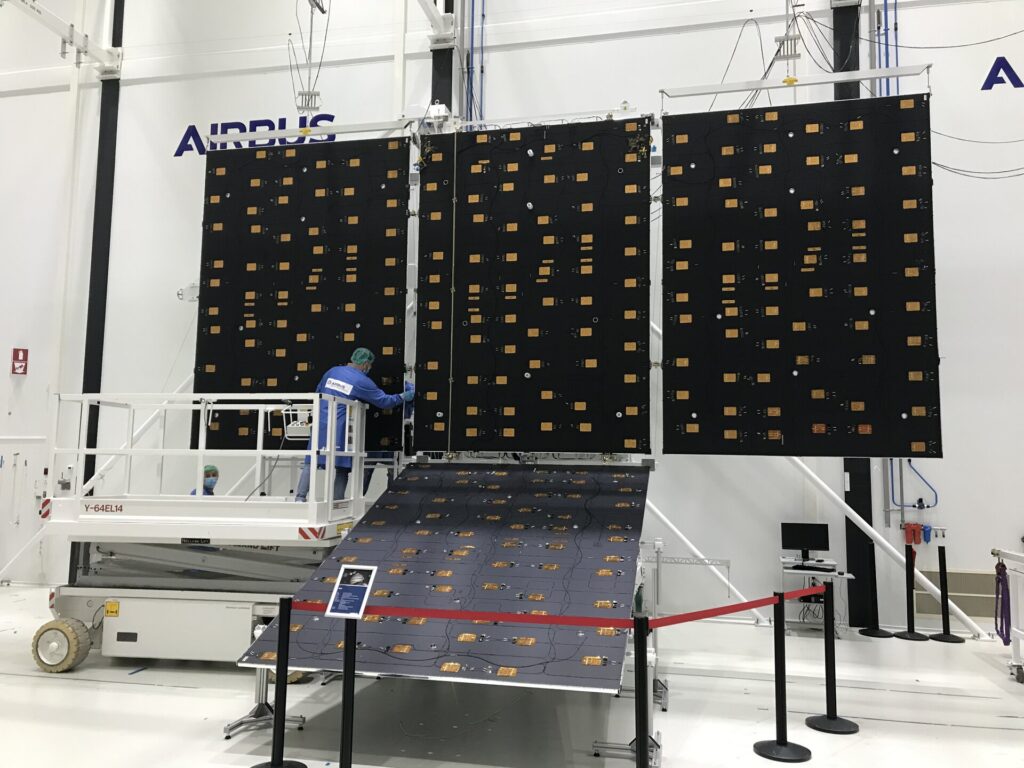The Airbus Space company has published a record showing the JUICE spacecraft. Its peculiarity lies in the fact that at the time of photographing the Earth messenger is at a distance of 1.5 million km from the Earth. This is almost four times more than the distance between our planet and the Moon.
Spotted! ????
Our ground-based telescope ????captured #ESAJuice ????️ more than 1.5 million km from Earth ????, on its way to Jupiter and its icy moons! ✨@esa @ESA_JUICE @esascience pic.twitter.com/I6LE4jI3rB— Airbus Space (@AirbusSpace) May 15, 2023
The JUICE spacecraft was launched on April 14, 2023. The purpose of its mission is Europa, Callisto and Ganymede — the three largest icy moons of Jupiter, under the surfaces of which huge oceans are hidden. However, it was not without some problems. Initially, JUICE failed to deploy the RIME radar antenna. It is one of its key scientific instruments of the entire mission. Fortunately, later engineers still found a way to fix the situation and deploy the antenna.
In honor of this success, Airbus Space has published a very interesting animation. On it you can see a small dot flying against the background of many stars. This point is JUICE. The pictures that make up the animation were taken on April 20. At the time of photographing, the spacecraft was at a distance of 1.5 million km from the Earth. For comparison, the average distance between the Earth and the Moon is 384 thousand km.
But how exactly did the experts manage to photograph such a tiny object located at such a great distance from the Earth? For this purpose, the robotic telescope ART (Airbus Robotic Telescope) was used. It is located in Spain and is used for monitoring near-Earth space and tracking spacecraft. Coordinates provided by NASA’s Jet Propulsion Laboratory were used to guide the telescope. In total, ART took 20 pictures with a five-minute exposure.

It is also worth noting another important factor, thanks to which JUICE could be photographed. The fact is that the spacecraft is equipped with a set of two solar panels with a total area of 85 m2 (at the moment this is a record for spacecraft that have ever left Earth orbit). Such an impressive size is due to the fact that the surroundings of Jupiter receive 27 times less light than the Earth. Huge solar panels significantly increase the brightness of the spacecraft, which makes it possible to make telescopic observations even at such great distances from the Earth.
It is worth noting that in the future astronomers will still have chances to see JUICE again. In 2024, 2026 and 2029, it will return to our planet three times to use its gravity to accelerate.
Follow us on Twitter to get the most interesting space news in time
https://twitter.com/ust_magazine
